Phylum Apicomplexa
1/184
Earn XP
Description and Tags
Lectures 38-42
Name | Mastery | Learn | Test | Matching | Spaced |
|---|
No study sessions yet.
185 Terms
For Toxoplasma gondii, what is the only host where sexual multiplication occurs?
cats (domestic and wild)
For Toxoplasma gondii, asexual replication occurs where in domsetic livestock, birds, grazing wildlife, dogs, and people?
CNS and edible tissues
The following lifecycle matches which species:
facultative direct/indirect lifecycle
ingestion of sporulated oocysts
2 sporocysts with 4 sporozoites
ingestion of tissue cysts
Toxoplasma gondii
For Toxoplasma gondii, where does sexual reproduction occur in the cat?
small intestine
For Toxoplasma gondii, how are most cats infected?
by ingestion of tissue cysts
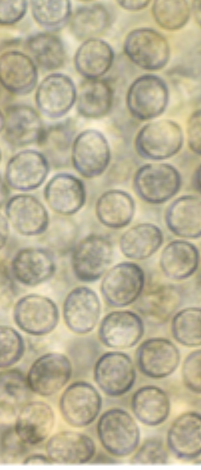
The eggs in this image match which species?
Toxoplasma gondii
Clinical signs of infection with Toxoplasma gondii in cats is split into what phases?
intestinal phase
tissue phase (asexual replication)
The following clinical signs match which phase of infection with Toxoplasma gondii in cats:
likely behaves like other coccidia
oocysts in stool
diarrhea, soft stool, without specific clinical signs
intestinal phase
The following clinical signs match whcih phase of infection with Toxoplasma gondii in cats:
respiratory disease (sneezing, light cough)
lymphadenopathy (tachyzoites in lymph nodes, macrophages)
Tissue phase (asexual replication)
What causes the light cough in the tissue phase (asexual replication) in cats infected by Toxoplasma gondii?
intracellular replication of tachyzoites in lungs
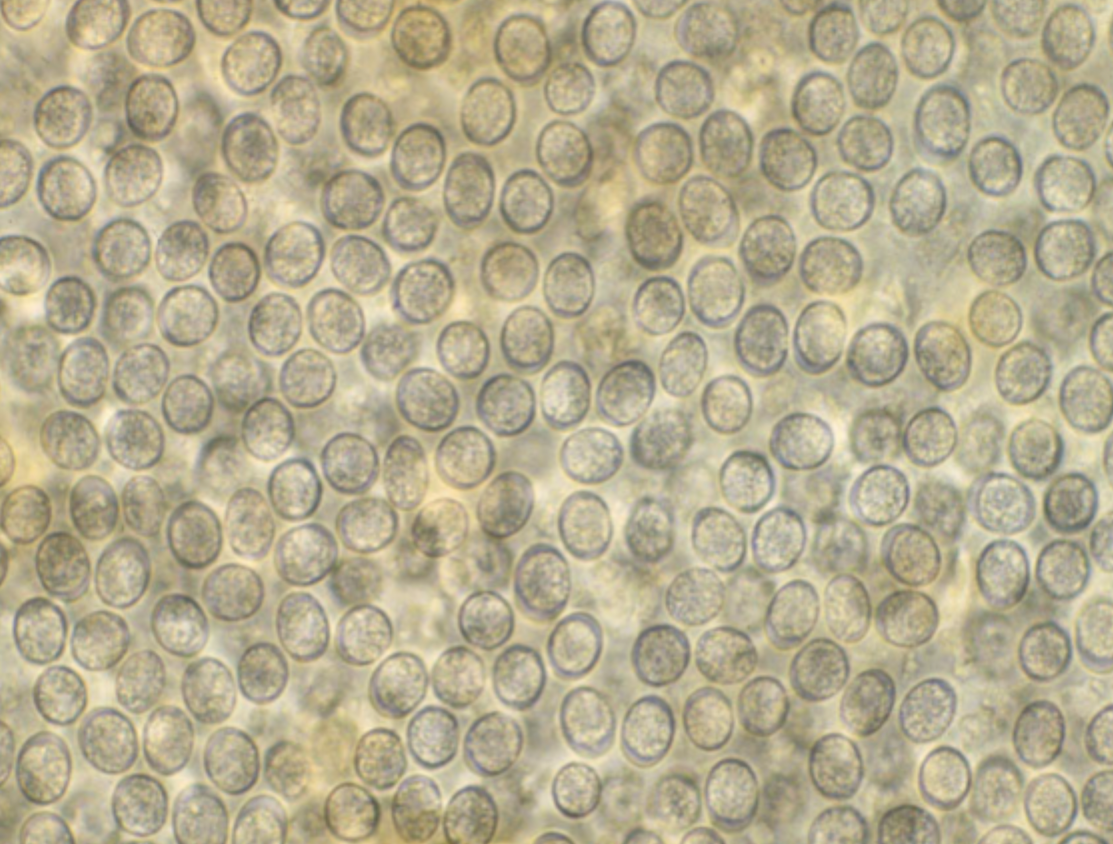
A stray cat comes into your clinic experiencing diarrhea, sneezing, coughing, and lymphadenopathy. Organisms measuring approximately 12 micrometers like those in the image are seen on fecal examination. What is the diagnosis?
Toxoplasma gondii
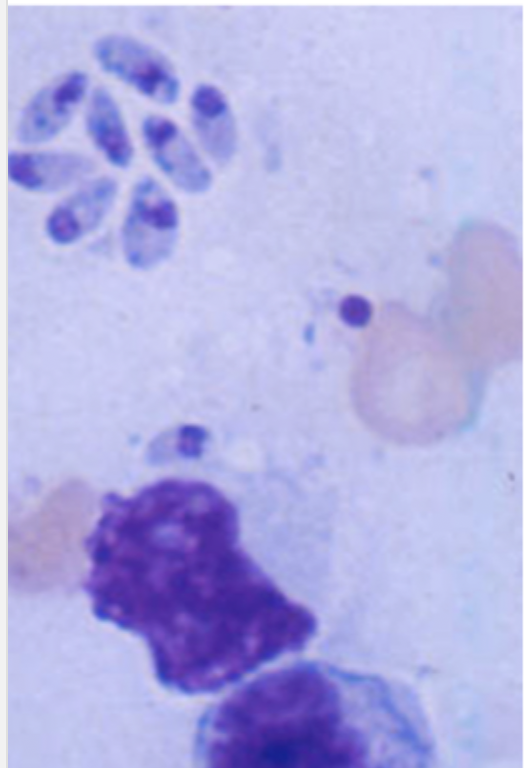
What is seen in this image of lymph node aspirate?
Tachyzoites
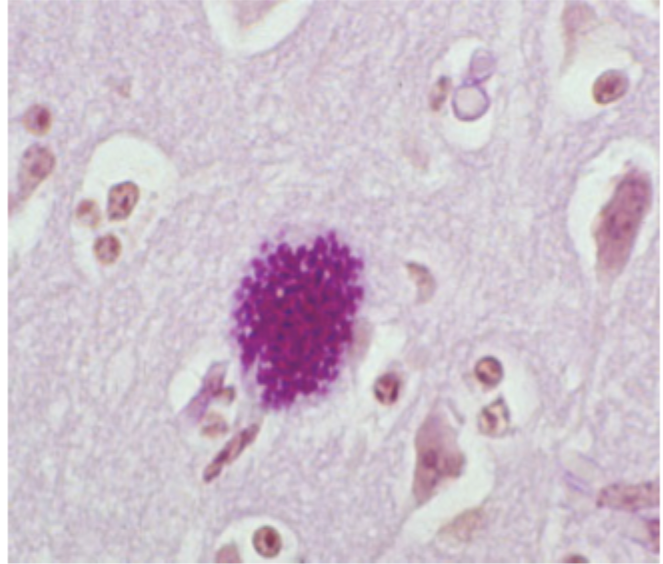
What is seen in this image of an infected mouse brain?
Bradyzoites
What presentation of clinical disease by Toxoplasma gondii is seen for canines?
suspect neurological disease
lymphadenopathy
respiratory complain
myositis
What presentation of clinical disease by Toxoplasma gondii is seen for sheep and goat production?
abortion storms
For ewes (sheep) infected with Toxoplasma gondii, does the first exposure while pregnant protect them from abortion in subsequent pregnancies?
Yes
Livestock infected with Toxoplasma gondii are sources of what for transmission to people?
tissue cysts
How are all animals infected with Toxoplasma gondii?
ingestion of oocysts or tissue cysts
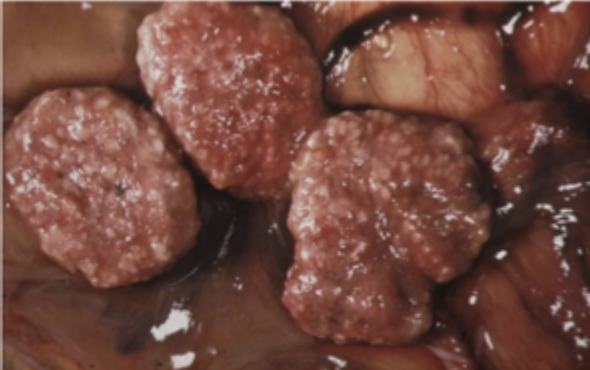
A herd of ewes has had an abortion storm in whcih 80% of animals are affected. All stages of gestation are affected, and lambs that are born are very weak. On the placentas, cotyledons have white foci of necrosis. Which one of the following choices is the primary differential diagnosis?
Toxoplasma gondii
Does Toxoplasma gondii present a zoonotic risk?
Yes
What is the primary source of all zoonotic infections for Toxoplasma gondii?
domestic and wild felidae
How do domestic and wild felidae transmit zoonotic Toxoplasma gondii?
infectious oocysts passed in feces then people and other intermediate hosts are infected by oocysts or tissue stages
What is the second leading cause of death from foodborne illness in the United States?
Toxoplasmosis
What are the effects of Toxoplasma gondii infection (Toxoplasmosis) in humans?
congenital birth defects
abortion to fetus when mother acquires primary infection during pregnancy
What is a major cause of mortality for HIV and other immunocompromised persons?
Toxoplasma gondii (Toxoplasmosis)
What virus can be associated with Toxoplasmic encephalitis (TE)?
Human Immunodeficiency Virus
Congenital toxoplasmosis is often asymptomatic until the second or third decade of life, when what occurs?
lesions develop in the eye
What can occur when a pregnant mother has congenital toxomplasmosis in the first trimester?
abortion or serious congenital birth defects
What can occur when a pregnant mother has congenital toxomplasmosis in the second and third trimester?
mild retardation
blindness
What can occur when a pregnant mother has congenital toxomplasmosis late in pregnancy?
clinically inapparent infections
What methods do we use to diagnose infection of Toxoplasma gondii?
fecal examination
serologic testing (IFA, ELISA, MAT)
PCR
What specimens can we use for testing to diagnose infection of Toxoplasma gondii?
serum
fluids (CSF, aqueous humor, amniotic)
tissue cysts (biopsy, necropsy)
How do we interpret serological test results for Toxoplasma gondii if the IgG result (titer) is negative (<32) and the IgM result (titer) is negative (<512)?
no serological evidence of Toxoplasma infection
How do we interpret serological test results for Toxoplasma gondii if the IgG result (titer) is negative (<32) and the IgM result (titer) is positive (>512)?
suspect early (acute) infection with Toxoplasma; obtain new specimen and test 2-3 weeks later. IgG positive test confirms suspicion
How do we interpret serological test results for Toxoplasma gondii if the IgG result (titer) is equivocal (</= 32) and the IgM result (titer) is equivocal (>/= 512)?
Subsequent re-testing fails to demonstrate measurable IgG antibody titer (>/= 32); investigate other causes for clinical symptoms
How do we interpret serological test results for Toxoplasma gondii if the IgG result (titer) is positive (>32) and the IgM result (titer) is positive (>512)?
Possible acute infection with Toxoplasma; obtain new specimen and test for rising IgG titer, 4 fold increase in IgG titer confirms suspicion
How do we interpret serological test results for Toxoplasma gondii if the IgG result (titer) is positive (>32) and the IgM result (titer) is negative or equivocal (</= 512)?
Infection with Toxoplasma for probably 1 year o longer; obtain new specimen and test for rising IgG titer; 4 fold increase in IgG titer confirms suspicion. If no change in titer assume chronic infection
Which species can potentially be associated with behavioral changes in humans and cats?
Toxoplasma gondii
Treatment of Toxoplasma gondii may or may not be indicated based on what?
presence of active vs chronic disease
immune status
site of infection
etc
What is the most important way to mitigate disease potential of Toxoplasma gondii for serologically negative pregnant women and immunocompromised patients?
prevention of exposure
Should treatment decisions for Toxoplasma gondii be based on the likelihood of cat exposure?
No, cat ownership/exposure has not been shown to increase risk of infection
What is recommended for women in regards to Toxoplasma gondii?
women of childbearing age should be tested prior to becoming pregnant and yearly as part of annual reproductive health examination
seronegative women should be tested regularly during prenatal examinations
eat all meat well cooked (well done or better)
wash all fruits and vegetables prior to consumption
rigourous handwashing and food hygiene
avoid gardening and other soil related activities during pregnancy
dump cat litter boxes daily by non pregnant household member
test household cats
Who should be contacted for up to date diagnostic and treatment protocols for Toxoplasma gondii?
CDC
When testing household cats for Toxoplasma gondii, the serologically positive or serologically negative cat is more problematic?
serologically negative
The apicoplast part of Toxoplasma gondii tachyzoite is important for what?
important for fatty acid metabolism
important drug target
What drugs can be used for veterinary pharmacologic management of Toxoplasma gondii?
Trimethoprim-sulfa and Pyrimethamine
Clindamycin
Atovaquone
Ponazuril/Diclazuril
Are there any curative therapies for Toxoplasma gondii?
No
Are there any FDA approved therapies for Toxoplasma gondii?
No
How do we resolve clinical disease of Toxoplasma gondii via pharmceuticals?
arresting (suppressive) rapid proliferation of the tachyzoite stage
Which drug is acknowledged as the treatment of choice for Toxoplasma gondii?
Clindamycin
Which drug is thought to act on the respiratory metabolism and inhibition of protozoa mitochondria transport and pyrimidine synthesis for Toxoplasma gondii?
Atovaquone
Which drug has activity against the apicoplast of tachyzoites of Toxoplasma gondii?
Ponazuril/Diclazuril
Which drug has rapid absorption/distribution in tissues to target activity against trachyzoites of Toxoplasma gondii?
Trimethoprim-sulfa and Pyrimethamine
What are the intermediate hosts of Toxoplasma gondii?
all endothermic vertebrates
Clinical disease of Toxoplasma gondii typically occurs in which host?
intermediate host
Recommendation for prevention of disease of Toxoplasma gondii are based on what?
hygiene and timely diagnosis
A female veterinarian is pregnant and serologically tested for toxoplasmosis. Her IgM titer is negative, but her IgG titer is positive (>64). What is the most appropriate interpretation for these results?
Both mother and baby are safe
A client visiting your practice is pregnant. She has been advised to surrender her cat because of the risk of Toxoplasmosis. What do you advise?
Clean the litterbox daily as a precaution to remove oocysts. Cook meat well, and wash fruits and vegetables.
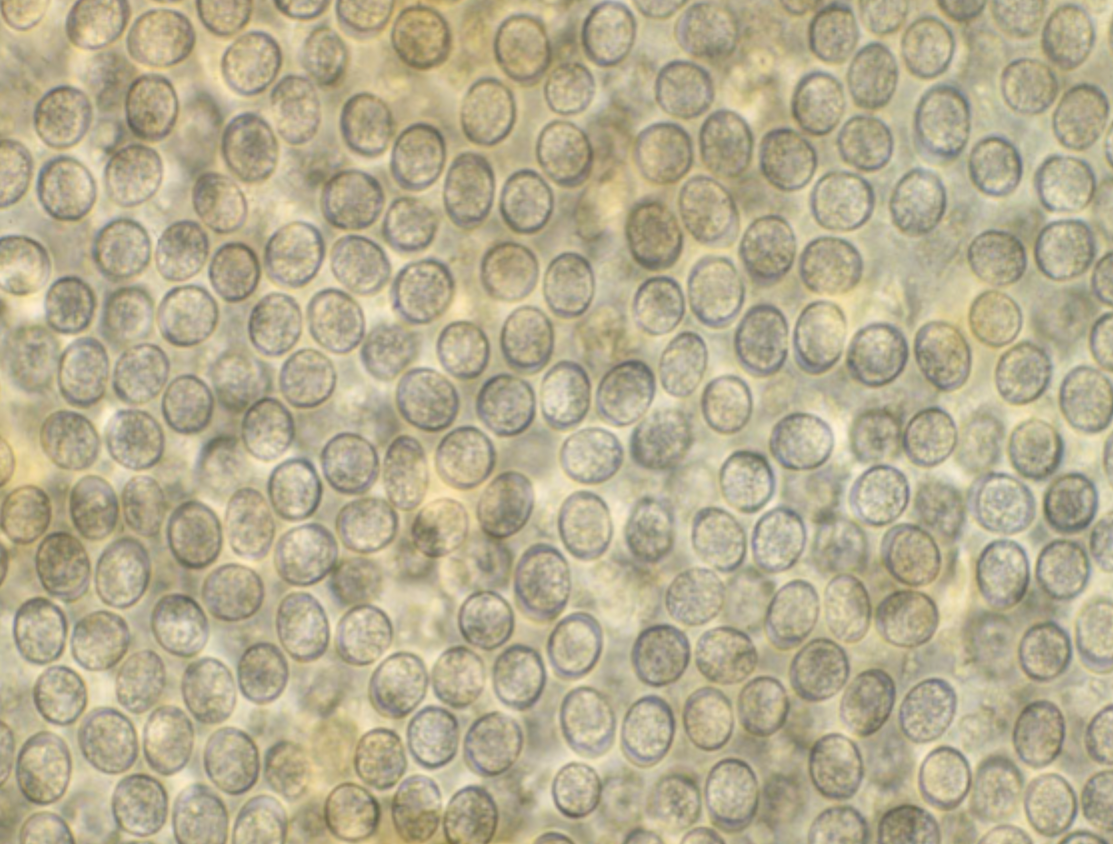
These oocysts, measuring 10 micrometers, were found on the fecal flotation of a sneezing kitten. What is the public health significance of this finding?
The oocysts are likely Toxoplasma gondii and have zoonotic potential when sporulated
What is the only host that has sexual multiplication of Neospora caninum?
dogs (domestic and wild)
Where are oocysts of Neospora caninum in dogs?
small intestine epithelium
How does Neospora caninum differ from Toxoplasma gondii?
immunologically
biologically (predominately indirect lifecycle, ingestion of tissue cysts in IH)
epidemiologically (not zoonotic, significant in cattle production)
What parasite is described by the following:
intercellular parasite of dogs, domestic livestock, and grazing wildlife
dogs are definitive host
morphologically similar to T gondii
Tachyzoites and Bradyzoites in tissues IH and DH
Domestic livestock, grazing wildlife, and dogs are IH
Neospora caninum
How are domestic livestock, grazing wildlife, and dogs infected by Neospora caninum?
infected by oocysts
vertical (prenatal) transmission
viable parasites capable of in vivo passage in IH
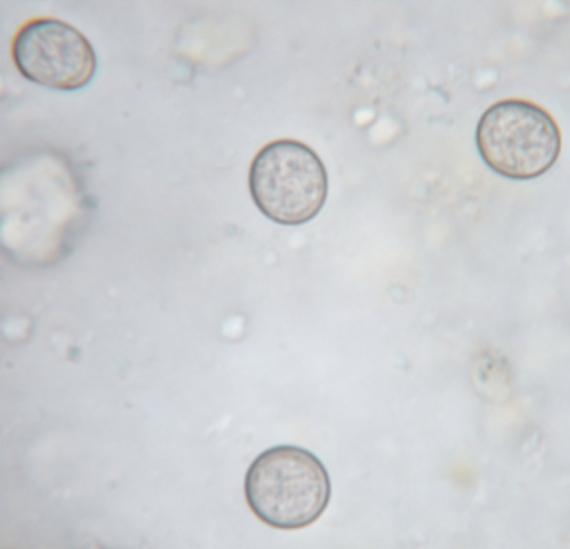
Which species is seen in this image?
Neospora caninum
What is the clinical significance of Neospora caninum in dogs?
congenital infection
asymptomatic at birth with clinical disease >3 weeks later
posterior paresis (neuromuscular disease)
What is the clinical significance of Neospora caninum in cattle?
reproductive disease (disease of placenta/fetus)
How do we treat infections of Neospora caninum in pet dogs?
no FDA approved or curative treatment
Clindamycin
Trimethoprim sulfadiazene in combination with Pyrimethamine
How do we control and prevention infections of Neospora caninum in pet dogs?
husbandry/mangement of risks
do not allow access to fetal or placental tissues
do not feed raw meat
do not breed females previously diagnosed with clinical disease or whelped litters with affected puppies
Avoid immunosuppressive therapies in seropositive dogs
How do we treat infections of Neospora caninum in cattle production?
No FDA approved treatment
Toltrazuril/ponazuril
How do we control and prevent infections of Neospora caninum in cattle production?
restrict dog access to cattle feed and facilities
be especially observant for signs of reproductive loss in herd
Keep records on herd productivity
Remove fetal/placental tissues promptly and dispose in biosecure manner
Make effort to keep a closed herd
Culling seropositive cows controversial
serological assessment if outbreak suspected

Which species is seen in this image?
Sarcocystis sp
For Sarcocystis sp, where does sexual replication occur in cats and dogs?
small intestine
For Sarcocystis sp, disease is only in which host?
intermediate host
Which species is described by the following:
obligate indirect lifecycle
ingestion of tissur cysts in specific intermediate hosts
dogs and cats are definitive hosts
sporocysts with 4 sporozoites on fecal flotation
Sarcocystis sp
What are the only hosts where sexual multiplication occurs for Sarcocystis sp?
dogs and cats
True or false: In Sarcocystis sp, clinical signs are not associated with sporocyst shedding.
True
In which intermediate hosts does Sarcosystis sp display asexual replication?
domestic livestock, birds, grazing wildlife, birds
Where does asexual replication of Sarcosytis sp in intermediate hosts occur?
striated muscle or endothelial cells
Equine are accidental hosts of which Sarcocystis sp?
S. neurona
What are the natural intermediate hosts of S neurona?
opossum/various warm blooded mammals
Which species of intermediate hosts are infected by Sarcocystis sp via ingestion of tissue cysts?
sheep-dog, cow-dog, etc
How are humans infected with Zoonotic Sarcocystosis?
eating undercooked meat containing mature sarcosysts
Cattle become infected by sporocysts of Sarcosystis cruzi while grazing. These parasites then undergo how many generations of asexual replication?
two
What is the clincal significance of Sarcocystis cruzi?
most infections are asymptomatic in dogs (definitive host)
adverse health effects in cattle (intermediate host) including abortion, still birth, eosinophilic myositis, necrotic encephalitis, fever, anorexia, diarrhea, muscle spasm, loss of tail hair, hyperexcitablity, cachexia, weakness, decreased milk yield, calves fail to thrive or undergo rpemature death in chachectic state
How do we treat infections of Sarcocystis cruzi?
treatment of infected hoof stock is not economically practical
Amprolium
What is the primary etiological agent of Equine Protozoa Myloencephalitis (EPM)?
Sarcosystis neurona
What are the clinical signs of equine protozoa myloencephalitis?
neurological disease: stumbling, ataxia, incoordination, lameness, paresis, muscle atrophy, recumbency, diaphoresis, urinary incontinence, constipation
How do we diagnose equine protozoa myloencephalitis?
by serology - IgG antibodies, IFA testing to distinguish is caused by S neurona or N hughesi
In cases of Equine Protozoa Myloencephalitis, does seropositivity equate to disease?
No
How do we treat horses infected with equine protozoa myloencephalitis?
Ponazuril
Sulfadiazene/Pyrimethamine
How does Ponazuril work to treat EPM caused by Sarcocystis sp?
targets mitochondria to disrupt amino acid synthesis and energy metabolism
cross blood brain barrier into CSF
How does Sulfadiazene/Pyrimethamine work to treat EPM caused by Sarcocystis sp?
interfere with parasite synthesis of folic acid and inhibit energy metabolism
What do we need to consider when using Sulfadiazene/Pyrimethamine to treat EPM caused by Sarcocystis sp?
possible toxicity from long term use
anemia, bone marrow suppression
must replace folic acid deficiency in host with supplements
Clinical disease from neospora is primarily associated with what in dairy production?
vertical transmission from Cow to Calf
Sarcocystis neurona is a “condition” of what more than a “neurological disease” of horses?
antibody prevalence
Which coccidia spp are found in the blood?
Hepatozoon
Babesia
Cytauxzoon
The following general features describe which disease:
disease associated with infection by Haemogregarine parasites in genus Hepatozoon
broad host range among vertebrates
largest distrubution of species is reptiles
disease results from asexual replication of parasite in dog intermediate host
ticks are definitive host
Hepatozoonosis
What is the intermediate host of Haemogregarine parasites in genus Hepatozoon?
dogs
What is the definitive host of Haemogregarine parasites in genus Hepatozoon?
ticks